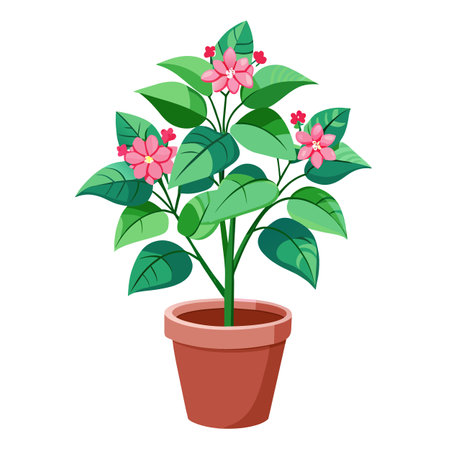Introduction to Soil Health and Pest Management
When it comes to keeping your garden healthy and thriving, good soil is one of the most powerful tools you have. Many gardeners focus on pesticides or traps to deal with pests, but a lot of those problems can actually be avoided by simply improving your soil. Healthy soil naturally supports strong plants and a balanced ecosystem underground that helps keep pest populations in check.
What Is Healthy Soil?
Healthy soil is alive with beneficial microbes, fungi, insects, and organic matter. This living network works together to support plant growth, help roots absorb nutrients, and fight off harmful invaders. When your soil is rich in life and well-balanced, your plants are stronger—and stronger plants are better at resisting pests on their own.
How Soil Health Impacts Pest Control
Pests often target weak or stressed plants. If your soil is lacking nutrients or has poor structure, your plants may not grow properly, making them easy targets for bugs and diseases. On the other hand, healthy soil encourages strong root systems and builds natural defenses within the plant.
Benefits of Healthy Soil for Natural Pest Control
| Soil Feature | How It Helps With Pests |
|---|---|
| Rich Organic Matter | Feeds beneficial microbes that compete with harmful organisms |
| Good Drainage and Structure | Prevents waterlogging that attracts pests like fungus gnats |
| Diverse Microbial Life | Supports a balanced ecosystem that keeps pest numbers low |
| Proper pH Balance | Makes nutrients more available to plants, promoting stronger growth |
The Importance of Understanding Soil Ecosystems
Your gardens soil isnt just dirt—its an entire ecosystem. Every time you add compost, mulch, or even walk through your beds, youre influencing this underground world. By learning how soil ecosystems work, you can make smarter gardening choices that reduce the need for chemical pesticides. When we take care of the soil, nature often takes care of the rest.
Key Takeaway:
If you want fewer pest problems in your garden, start by focusing on building healthy soil. It’s a natural solution that benefits both your plants and the environment.
2. The Soil Food Web: Nature’s First Line of Defense
When it comes to natural pest control, one of the most powerful tools lies right beneath our feet — the soil food web. This complex network of living organisms in the soil plays a vital role in keeping pest populations under control without the need for synthetic chemicals.
What Is the Soil Food Web?
The soil food web is made up of billions of microorganisms and small creatures that interact with each other and with plants. These include bacteria, fungi, protozoa, nematodes, earthworms, insects, and even small mammals. Each plays a unique role in maintaining balance underground.
Key Players in the Soil Food Web
| Organism | Main Role | Pest Control Benefit |
|---|---|---|
| Bacteria | Break down organic matter and release nutrients | Create healthy plants that are more resistant to pests |
| Fungi | Form symbiotic relationships with plant roots | Outcompete harmful fungi and improve nutrient uptake |
| Nematodes (beneficial) | Feed on harmful insects or insect larvae | Reduce populations of root-feeding pests naturally |
| Predatory Insects (e.g., beetles) | Feed on harmful insects above and below ground | Keep pest numbers in check without human intervention |
| Earthworms | Aerate soil and decompose organic material | Create better growing conditions for plants, reducing stress-related pest issues |
A Balanced Ecosystem Deters Pests
Pests thrive when there’s an imbalance in the soil ecosystem. For example, poor soil health can lead to weak plants that are more susceptible to insect attacks. But when your soil is rich with life, beneficial organisms compete with or prey on pests, making it harder for them to take over.
A Few Natural Pest Control Examples:
- Bacterial predators: Certain bacteria like Bacillus thuringiensis naturally produce proteins toxic to specific pests.
- Nematode warriors: Beneficial nematodes seek out and destroy pest larvae underground before they mature.
- Lacewing larvae: Known as “aphid lions,” these bugs feed on aphids that damage plants.
The Bottom Line: Healthy Soil Means Fewer Pests
Caring for your soil isn’t just about growing bigger tomatoes or prettier flowers — it’s about creating a self-sustaining environment where nature does the heavy lifting. By nurturing a thriving soil food web, you’re building your garden’s first line of defense against pests — no sprays required.

3. Building Healthy Soil Through Organic Practices
Healthy soil is the foundation of a thriving garden and one of the best natural defenses against pests. When your soil is rich in organic matter and teeming with beneficial microbes, plants grow stronger and are better able to resist pest attacks. In this section, we’ll explore practical, organic ways you can improve your soil health to help prevent pest problems before they start.
Compost: Nature’s Fertilizer
Adding compost to your garden beds is one of the easiest and most effective ways to build healthy soil. Compost improves soil structure, increases microbial activity, and provides essential nutrients that support strong plant growth. Stronger plants are less likely to be targeted by pests.
Tips for Using Compost:
- Apply 1–2 inches of compost to your garden beds in the spring and fall.
- Mix compost into the top few inches of soil or use it as a mulch around plants.
- Use well-aged compost to avoid introducing weed seeds or pathogens.
Cover Crops: Living Mulch for Soil Health
Cover crops, also known as green manure, are plants grown specifically to improve soil health between growing seasons. They add organic matter, fix nitrogen, and suppress weeds—creating an environment where pests struggle to thrive.
Common Cover Crops and Their Benefits:
| Cover Crop | Main Benefit | Best Time to Plant |
|---|---|---|
| Clover | Nitrogen fixer | Spring or fall |
| Rye | Weed suppression & erosion control | Fall |
| Buckwheat | Quick-growing biomass builder | Summer |
Crop Rotation: Breaking Pest Cycles
Certain pests target specific plant families. If you grow the same crop in the same spot year after year, those pests can build up in the soil. Crop rotation helps disrupt their life cycle and keeps your garden healthier overall.
How to Rotate Crops Effectively:
- Avoid planting crops from the same family in the same spot more than once every three years.
- Group plants by family (e.g., tomatoes, peppers, eggplants = nightshades).
- Create a simple rotation plan for your garden beds and keep notes each season.
Mulching: A Barrier Against Pests
Mulch isn’t just for moisture retention—it also plays a key role in pest prevention. Organic mulches like straw, shredded leaves, or wood chips create a physical barrier that deters some pests and enhances microbial life in the soil.
Mulching Tips:
- Apply a 2–4 inch layer around plants, keeping it a few inches away from stems.
- Replenish mulch as it breaks down over time to maintain consistent coverage.
- Avoid synthetic mulches when aiming for organic practices—they don’t feed the soil.
By using these organic methods—composting, planting cover crops, rotating your vegetables, and applying mulch—you can naturally strengthen your soil and reduce pest issues without reaching for chemical sprays. Healthy soil truly is your gardens best defense!
4. How Nutrient-Rich Soil Boosts Plant Immunity
Healthy, nutrient-rich soil does more than just help plants grow—it also strengthens their natural defenses against pests. When soil contains a well-balanced mix of essential nutrients, plants are better equipped to resist attacks from insects and diseases. Just like people need a balanced diet to stay healthy, plants thrive when they get the right nutrients in the right amounts.
Why Balanced Soil Nutrition Matters
Plants growing in nutrient-rich soil develop stronger cell walls, deeper roots, and more vibrant foliage. These physical traits make it harder for pests to feed on them or cause serious damage. For example, thicker leaves can deter chewing insects, while robust root systems help plants absorb more water and nutrients, making them less stressed and more resilient.
Key Nutrients That Support Plant Health
Certain nutrients play specific roles in plant immunity. Heres a simple breakdown of some important ones:
| Nutrient | Role in Plant Health | Pest Resistance Benefit |
|---|---|---|
| Nitrogen (N) | Promotes leafy growth | Too much can attract pests; balance is key |
| Phosphorus (P) | Supports root development and flowering | Stronger roots improve plant stress tolerance |
| Potassium (K) | Boosts overall plant vigor | Helps plants fight off diseases and pests naturally |
| Calcium (Ca) | Strengthens cell walls | Makes it harder for pathogens to invade plant tissues |
| Magnesium (Mg) | Aids in photosynthesis | Improves energy production, supporting immune responses |
| Sulfur (S) | Essential for protein synthesis | Helps produce compounds that deter pests |
The Soil Microbe Connection
A healthy soil isn’t just about minerals—it’s also full of life. Beneficial microbes like bacteria and fungi help break down organic matter, making nutrients easier for plants to absorb. These microbes can also form protective relationships with plant roots, helping them fend off harmful organisms before they become a problem.
Tips for Building Nutrient-Rich Soil Naturally:
- Add compost regularly to boost organic matter.
- Use natural fertilizers like bone meal or kelp meal.
- Rotate crops to avoid depleting specific nutrients.
- Avoid over-fertilizing—too much of one nutrient can throw off the balance.
- Test your soil every couple of years to monitor nutrient levels.
By focusing on creating nutrient-rich soil, you’re giving your plants the tools they need to stay healthy and naturally resist pests—without the need for harsh chemicals.
5. Avoiding Chemical Dependency by Focusing on the Roots
When pests show up in the garden, it’s easy to reach for a quick fix like synthetic pesticides. But relying on chemicals can create bigger problems over time—harming beneficial insects, polluting water, and even making pests more resistant. Instead, we can take a smarter approach by focusing on what’s happening beneath the surface: the health of our soil.
Healthy Soil = Fewer Pests
Healthy soil supports stronger plants that are naturally more resistant to pests and diseases. When plants get the nutrients they need from rich, living soil, they’re better able to fight off invaders without extra help. Think of it like this: just as a healthy immune system keeps you from getting sick, strong roots keep your plants safe.
How Poor Soil Leads to Pest Problems
Many common pest issues start with weak or stressed plants. And often, those plants are struggling because of poor soil conditions—compacted ground, low organic matter, or imbalanced nutrients. Here’s a quick comparison:
| Soil Condition | Plant Health | Pest Risk |
|---|---|---|
| Rich in organic matter, well-aerated | Strong growth, natural defenses active | Low |
| Poor drainage, low nutrients | Weak growth, stressed | High |
| Chemically treated soil | Unbalanced microbes, weakened roots | Moderate to high |
Natural Practices That Support Soil Health
You don’t need chemicals to protect your garden when you build a strong foundation. Here are some simple ways to improve your soil and reduce pest pressure naturally:
- Add compost regularly: Feeds soil life and improves structure.
- Use mulch: Helps retain moisture and suppress weeds (which can attract pests).
- Avoid tilling too much: Protects beneficial organisms that live in the soil.
- Plant cover crops: Prevents erosion and adds nutrients back into the earth.
- Rotate crops: Breaks pest cycles and balances nutrient use.
A Long-Term Solution That Works With Nature
The goal isn’t just to stop pests today—it’s to create a thriving garden that needs less help tomorrow. By investing time into building healthy soil now, you’ll save effort (and money) down the road while reducing your reliance on synthetic products. It’s not about being perfect; it’s about making small changes that add up to a big difference—for your plants, your environment, and your peace of mind.
6. Real-Life Examples and Success Stories from American Gardens
Healthy soil isnt just a theory—it’s a proven solution that many gardeners and farmers across the U.S. have used to fight pests naturally. By focusing on improving their soil structure and boosting microbial life, these growers have seen dramatic reductions in pest problems without relying heavily on chemical pesticides.
Case Study 1: Backyard Garden in Portland, Oregon
Susan Miller, a home gardener in Portland, struggled for years with aphids attacking her kale and tomatoes. After attending a local workshop on composting and soil health, she began adding homemade compost and using cover crops like clover during the off-season. Within one year, Susan noticed fewer aphids and healthier, more resilient plants.
“I used to spray my plants every week. Now I focus on feeding the soil, and the pests barely show up anymore.” – Susan Miller
Case Study 2: Small Organic Farm in Pennsylvania
Green Meadow Farm in Lancaster County transitioned to organic practices over a decade ago. One major change was incorporating crop rotation, compost teas, and regular soil testing to improve biological activity. Over time, they saw a decline in root maggots and leaf miners that had previously damaged their leafy greens.
“Our pest pressure dropped significantly after we started nurturing the soil. Healthy roots equal stronger plants that can resist bugs.” – Mark Johnson, farm co-owner
Case Study 3: Urban Community Garden in Chicago, Illinois
A community garden project in downtown Chicago faced issues with slugs and fungal diseases due to compacted urban soils. By introducing worm castings, aerating the beds, and planting native flowers for beneficial insects, they created a more balanced ecosystem. These changes led to healthier crops and fewer infestations.
“We didn’t need more sprays—we needed better soil. Now our garden is thriving with less effort.” – Jasmine Lee, volunteer coordinator
Quick Overview of Soil Practices That Worked
| Location | Pest Issue | Soil Improvement Strategy | Result |
|---|---|---|---|
| Portland, OR | Aphids on vegetables | Composting & cover crops | Fewer aphids; stronger plants |
| Lancaster County, PA | Root maggots & leaf miners | Crop rotation & compost teas | Pest population decreased dramatically |
| Chicago, IL | Slugs & fungal disease | Worm castings & beneficial insect habitat | Healthier plants; reduced slug damage |
The Takeaway from These Stories
Whether youre growing food in your backyard or managing several acres of farmland, improving your soils health can be a game-changer. These real-life stories show that natural pest control starts below the surface—with living, breathing soil full of nutrients and microbes that support strong plant growth.

